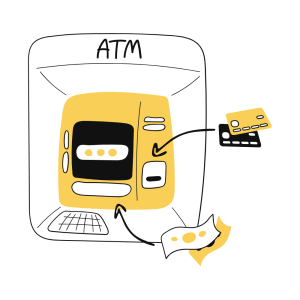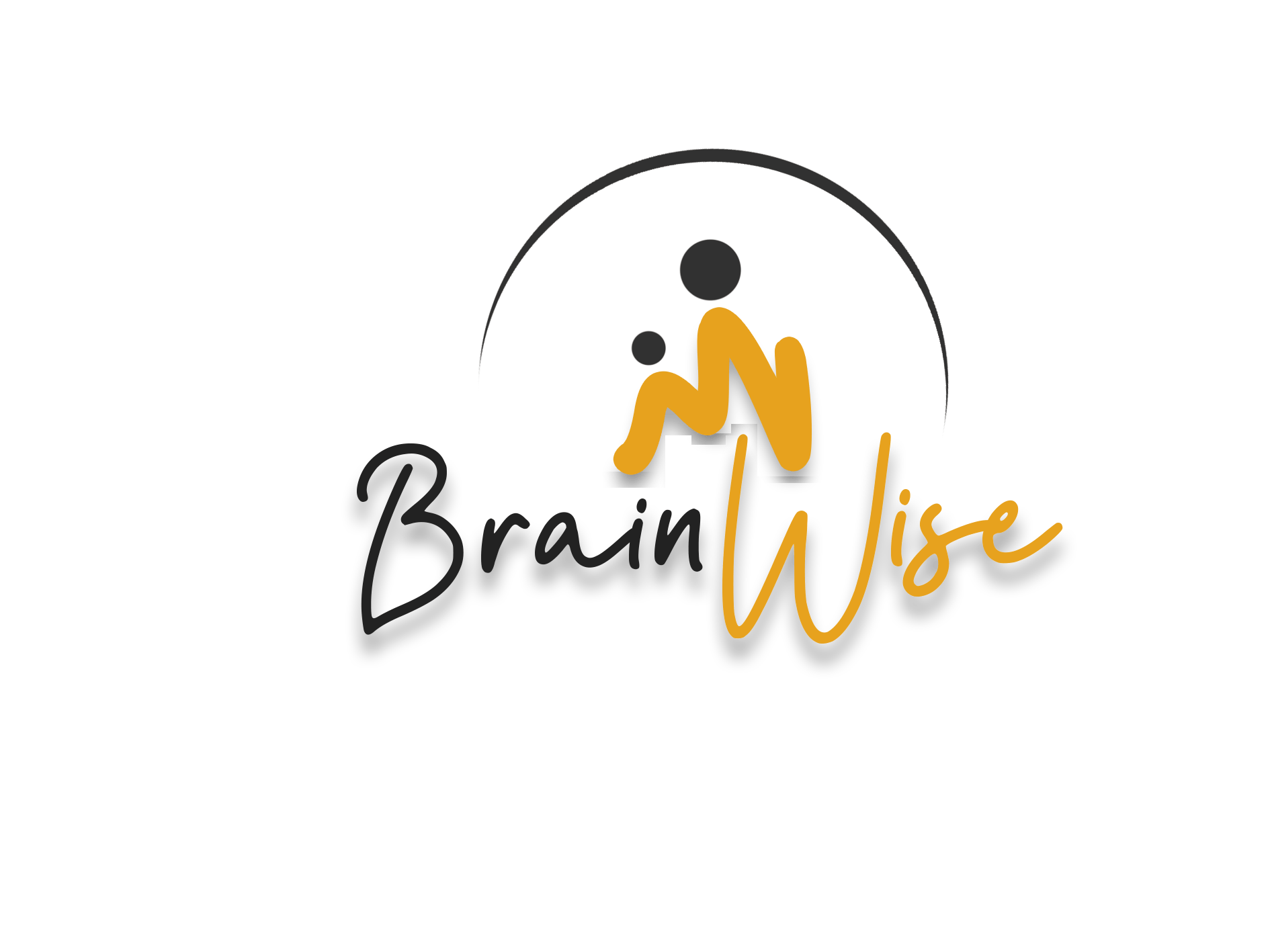Mental health encompasses emotional, psychological, and social well-being and influences our thoughts, feelings, and actions. It is crucial for handling stress, relating to others, and making healthy choices. Just as physical health is vital, mental health is essential for people of all ages.
Mental illnesses affect a person’s thinking, feeling, mood, or behavior, impairing daily functioning and relationships. Examples include Major Depressive Disorder (MDD) and schizophrenia. It’s important to note that poor mental health and mental illness are not the same. One can experience poor mental health without a diagnosed mental illness and vice versa.
Mental and physical health are interconnected. Mental illness, especially depression, raises the risk of physical health problems such as stroke, type 2 diabetes, and heart disease. Conversely, chronic physical conditions can increase the risk and severity of mental health issues like depression or bipolar disorder.


Track Income and Expenses:
The first step to financial stability is meticulously tracking income and expenses. Start by documenting all sources of income, including salaries, bonuses, and any side money-earning opportunities. Then, categorize your expenses to understand exactly where your money is going. This clarity is essential for spending wisely and saving money. By tracking every dollar, you can make more informed choices about your finances and identify areas where you might be overspending.
Set Priorities:
To manage your finances effectively, it’s crucial to set priorities. This means ranking your expenses in order of importance. Your top priorities should be essentials such as rent, utilities, groceries, and transportation. Allocate funds for savings and debt repayment before spending on non-essential items like dining out or entertainment. Setting priorities and goals not only helps in managing your current expenses but also ensures that you are prepared for future financial needs.
Monitor and Adjust:
Financial management is not a one-time task but an ongoing process. Regularly monitor and adjust your budget to reflect any changes in your income or expenses. This dynamic approach ensures that you stay on track with your financial goals and make adjustments as needed to maintain financial stability.

Set a Savings Goal:
Establishing an emergency fund is a crucial part of setting priorities and goals. Aim to save at least three to six months’ living expenses in an easily accessible account. This fund will act as a financial safety net, allowing you to handle unexpected costs such as medical emergencies or major car repairs without jeopardizing your financial health.
Automate Savings:
To consistently contribute to your emergency fund, set up automatic transfers from your checking account to your savings account. Automating your savings ensures that you regularly contribute to your emergency fund without remembering to make manual deposits. This method aligns with spending wisely and saving money, helping you build a financial cushion over time.
Avoid Unnecessary Withdrawals:
It’s important to use your emergency fund solely for genuine emergencies. Avoid dipping into this fund for non-essential expenses or planned purchases. This discipline helps preserve your emergency fund and ensures it remains available for true emergencies, aligning with the principle of money earning through careful financial management.

Understand Your Debt:
Keeping a detailed record of all your debts, including amounts, interest rates, and repayment terms, is essential. This understanding helps you strategize effectively and prioritize which debts to pay off first. By comprehending the expenses meaning associated with each debt, you can make better decisions about managing and reducing your overall debt.
Prioritize High-Interest Debt:
Focus on repaying high-interest debt first to reduce the total amount of interest paid over time. This method is effective in minimizing financial strain and accelerating your journey to being debt-free. Prioritizing high-interest debts aligns with setting priorities and goals to achieve long-term financial stability.
Make Consistent Payments:
Always ensure that you make at least the minimum payments on all your debts to avoid late fees and penalties. Where possible, aim to pay more than the minimum to reduce your debt more quickly. This consistent payment strategy is crucial for maintaining good credit and achieving financial goals.

Identify Priorities:
Start by reflecting on what truly matters to you and what goals you want to achieve. This could include saving for the future, investing in personal growth, or spending on enjoyable experiences. By clearly defining your priorities, you can ensure that your spending is aligned with your core values and long-term aspirations.
Spend Intentionally:
Make purchases that align with your values and long-term goals. Avoid impulse buys that don’t contribute to your overall satisfaction and well-being. By spending intentionally, you ensure that each expenditure supports your desired lifestyle and effectively sets priorities and goals.
Evaluate Satisfaction:
Regularly assess whether your spending brings you happiness and fulfillment. Adjust your spending habits accordingly if you find that certain purchases do not contribute to your satisfaction. This practice of evaluating satisfaction helps you stay true to your values and ensures that your money is used to enhance your quality of life.

Pause Before Purchasing:
Before making a purchase, take a moment to pause and think about whether you need the item and if it fits within your budget and setting priorities. This brief reflection can help you avoid unnecessary purchases and ensure your spending aligns with your financial goals.
Reflect on Purchases:
After making a purchase, reflect on how it made you feel. Did it bring you joy, or did you experience buyer’s remorse? Use this reflection to guide future spending decisions. Practicing mindful spending involves understanding how each purchase impacts your overall satisfaction and well-being.
Limit Distractions:
To reduce unnecessary temptations and impulse buys, unsubscribe from marketing emails and avoid browsing online shops without a specific need. This helps you stay focused on your budget and track income and expenses more effectively, reducing the risk of unplanned expenditures.

Set a Spending Plan:
Create a realistic budget that includes both essential and discretionary expenses. Allocate funds for things that bring you joy and satisfaction, ensuring that your budget reflects your values and goals. A well-thought-out spending plan helps you manage your finances effectively and set priorities for your spending.
Monitor Expenses:
Regularly track your spending to see where your monthly money goes. By monitoring your expenses, you can stay within your budget and make informed adjustments as needed. This ongoing process helps you stay on top of your financial situation and track income and expenses accurately.
Reward Yourself Wisely:
Plan for occasional splurges that you can look forward to, while ensuring they fit within your budget. Knowing you have a budgeted reward can increase satisfaction and prevent feelings of deprivation. Rewarding yourself wisely allows you to enjoy the fruits of your disciplined spending while maintaining financial balance.

Set a Regular Bedtime and Wake-Up Time:
Adhering to a regular bedtime and wake-up time is crucial for maintaining a healthy sleep cycle. Going to bed and waking up at the same time every day, including weekends, helps reinforce your body’s natural sleep-wake cycle. This consistency is essential in preventing sleep pattern disturbance and improving overall sleep quality.
Gradually Adjust Your Schedule:
If you need to adjust your sleep schedule, do so gradually. Making minor adjustments, such as shifting your bedtime by 15-30 minutes, is more effective than making a drastic change. This approach helps your body adapt to the new routine without disrupting your sleep pattern.
Stick to Your Schedule:
Even if you experience a poor night’s sleep, try to stick to your regular schedule. Consistency helps regulate your internal clock, which is vital for achieving better quality sleep over time. Sticking to your bedtime routine can improve your sleep quality and support a more stable sleep pattern.

Wind Down Before Bed:
Engage in calming activities about an hour before bedtime to help prepare your body for sleep. Activities like reading, taking a warm bath, or practicing relaxation techniques such as deep breathing or meditation can promote a smoother transition to sleep. This preparation aligns with creating a beneficial bedtime routine and enhances your ability to fall asleep.
Limit Screen Time:
The blue light emitted by electronic devices such as phones, tablets, and computers can interfere with your ability to fall asleep. To avoid sleep pattern disturbance, it’s advisable to limit screen time at least an hour before bed. This reduction helps your body produce melatonin, a hormone that regulates your sleep cycle.
Create a Comfortable Sleep Environment:
Ensure your bedroom is conducive to sleep by keeping it cool, dark, and quiet. Utilize blackout curtains, earplugs, or a white noise machine if necessary. A comfortable sleep environment is crucial for achieving quality sleep and maintaining a consistent sleep pattern.

Watch Your Food and Drink Intake:
Avoid consuming large meals, caffeine, and alcohol close to bedtime. These can lead to discomfort or frequent awakenings, disrupting your sleep pattern and impacting the quality of your rest. For optimal sleep quality, it’s best to have your last meal a few hours before bed and limit stimulants in the evening.
Stay Active:
Regular physical activity promotes better sleep by helping you fall asleep faster and enjoy deeper rest. However, avoid vigorous exercise too close to bedtime, as it may be stimulating and interfere with your ability to fall asleep. Exercise helps maintain a healthy sleep cycle and supports overall sleep quality.
Stay Hydrated, but Not Too Much:
While staying hydrated is important, drinking too much water right before bed can lead to frequent trips to the bathroom during the night. To minimize interruptions in your sleep cycle, try to reduce fluid intake an hour or two before bedtime.
Additional Tips for Sleep Quality:
- Sleep Cycle How Long: Understand that a typical sleep cycle lasts about 90 minutes. Aim to complete multiple full cycles by aligning your bedtime and wake-up time with these cycles for better sleep quality.
- How Much Time Should I Sleep: Ensure you are getting enough sleep for your age group, as recommended. For most adults, this means approximately 7-9 hours per night. Refer to guidelines on how many hours sleep by age to determine your ideal sleep duration.
- Sleep Pattern Meaning: A consistent sleep pattern involves regular sleep and wake times, which helps to regulate your internal clock and improves overall sleep quality.

Stay Present:
One of the most effective ways to practice mindfulness is to focus on the present moment rather than dwelling on past events or worrying about future outcomes. Techniques like deep breathing, mindfulness meditation, or grounding exercises can help you stay centered. Practice mindfulness meaning involves immersing yourself in the current moment, which can help reduce frustration attraction and improve emotional regulation.
Identify Triggers:
Pay attention to the situations or behaviors that commonly trigger your frustration. By identifying these triggers, you can better anticipate and manage your reactions. This understanding helps you in how to practice mindfulness in daily life and prepares you to handle frustration more effectively.
Observe Your Reactions:
Notice your physical and emotional responses when faced with frustrating situations. By becoming aware of these reactions, you can intervene before your frustration escalates. Learning how to practice mindfulness for anxiety can also aid in managing these responses and keeping frustration in check.

Pause and Reflect:
When frustration begins to rise, take a moment to pause. Counting to ten, taking deep breaths, or stepping away from the situation can provide you with time to calm down and respond more thoughtfully. This approach aligns with how do I practice mindfulness in stressful moments.
Express Yourself Calmly:
When discussing frustrating situations, use “I” statements to express your feelings and needs without assigning blame. For example, you might say, “I feel upset when meetings run late because it disrupts my schedule.” This method of communication helps maintain constructive dialogue and reduces conflict.
Engage in Stress-Relieving Activities:
Incorporate activities into your routine that reduce stress and enhance your mood, such as exercise, hobbies, or spending time with loved ones. Regular engagement in these activities can improve your resilience to frustration and contribute to overall well-being.

Reframe Your Thoughts:
Challenge and reframe negative thoughts into more positive or neutral perspectives. Instead of thinking, “This always happens to me,” consider, “This is challenging, but I can handle it.” Practice mindfulness meaning also involves altering your thought patterns to foster a more optimistic outlook.
Practice Gratitude:
Focusing on the positive aspects of your life and actively practicing gratitude can shift your attention away from frustration. Keeping a gratitude journal or reflecting regularly on things you are thankful for can enhance your emotional state and improve how you handle frustrating situations.
Set Realistic Expectations:
Recognize that some situations are beyond your control and that perfection is unattainable. By setting realistic expectations for yourself and others, you can reduce feelings of frustration and manage stress more effectively. This approach aligns with practice mindful eating, where you focus on achievable goals and present needs rather than unattainable ideals.

Listen Actively:
Effective communication skills are essential for handling conflicts. Focus on truly understanding the other person’s perspective without interrupting. Use active listening techniques such as nodding, maintaining eye contact, and summarizing their words to show that you’re engaged. Mastering communication skills meaning involves being fully present and attentive, which can significantly reduce misunderstandings and foster constructive dialogue.
Use “I” Statements:
Communicate your feelings and needs without placing blame or criticism. For example, instead of saying, “You always miss deadlines,” try, “I feel concerned when deadlines are missed because it affects our team’s performance.” This approach helps in handling conflicts more constructively by expressing your perspective in a non-confrontational manner.
Stay Calm and Respectful:
Maintain a calm demeanor and use respectful language throughout the discussion. Keeping your tone calm and avoiding raised voices are key aspects of communication skills. Be mindful of your body language to prevent escalating the conflict and to ensure that the conversation remains productive.

Take Deep Breaths:
When emotions start to rise during a conflict, take a moment to pause and practice deep breathing. This helps in calming your nervous system and allows you to collect your thoughts. Learning how to manage conflicts involves techniques like emotional regulation to maintain control and focus during tense situations.
Recognize and Manage Your Triggers:
Identify what typically triggers strong emotional reactions in you and develop strategies to manage these triggers. This might involve stepping away briefly or using relaxation techniques to prevent escalation. Understanding and practicing emotional regulation is crucial for handling conflicts effectively.
Stay Focused on the Issue:
During conflicts, avoid dredging up past grievances or bringing unrelated issues into the discussion. Stick to addressing the current problem and work on finding a solution specific to the issue at hand. This approach helps in maintaining clarity and prevents the conflict from becoming more complicated.

Collaborate on Solutions:
Approach conflicts with a problem-solving mindset. Engage the other person in brainstorming and finding a mutually beneficial solution. Collaboration involves asking for their input and working together to resolve the issue, which is essential for maintaining a positive relationship and constructively handling conflicts.
Be Open to Compromise:
Compromise involves giving and taking, not losing. Be willing to adjust your position and find a middle ground that both parties can agree on. This flexibility can facilitate a resolution that respects both viewpoints and fosters a more harmonious outcome.
Follow-Up:
After reaching a resolution, follow up to ensure that the agreed-upon solution is effective. This step demonstrates your commitment to handling conflicts constructively and helps in maintaining a positive relationship with the other party. It shows that you are invested in ensuring that the solution works and that the conflict is resolved satisfactorily.

Create a To-Do List:
Start your day by writing down specific tasks you want to accomplish. Craft a detailed morning routine list that includes both your work and personal goals. Prioritize these tasks by their importance and tackle the most critical ones first. By organizing your goals and priorities, you’ll have a clear roadmap for the day ahead.
Set Achievable Goals:
Break larger tasks into smaller, manageable steps to make them less daunting. Setting goals and targets that are realistic and attainable helps maintain your motivation. Each time you complete a smaller goal, you’ll gain a sense of accomplishment that fuels your drive to tackle the next task.
Visualize Success:
Spend a few minutes each morning visualizing the successful completion of your tasks. Imagining the positive outcomes and how you will achieve them can boost your motivation and set a constructive tone for the day. Visualization helps align your focus on positivity and prepares you mentally to achieve your goals and priorities.

Start with Something You Enjoy:
Make your mornings more enjoyable by incorporating activities you love into your morning routine list. Whether it’s listening to your favorite music, reading a few pages of a book, or enjoying a beloved breakfast, these small joys can make getting up easier and set a positive tone for the day.
Exercise or Stretch:
Engaging in physical activity, even a short walk or a few minutes of stretching, can significantly boost your energy levels and improve your mood. Exercise helps to increase motivation and sets a productive tone for the day. Regular movement is essential for maintaining your overall well-being and motivation.
Practice Mindfulness or Meditation:
Begin your day with mindfulness or meditation to clear your mind and set a calm, focused intention. Focus on the present moment through these practices to enhance your mental clarity and reduce stress. Practice mindfulness meaning in your morning routine can help center your thoughts and increase your motivation.

Focus on Positivity:
Start your day by focusing on something positive. This could be something you’re looking forward to or a point of gratitude. Shifting your mindset to focus on good things enhances your motivation and helps maintain your motivation throughout the day.
Affirmations:
Use positive affirmations to boost your self-confidence and motivation. Statements like “I am capable,” “I am motivated,” and “Today will be a productive day” can reinforce a positive mindset. Incorporating inspiring positive gratitude quotes into your routine can further support your focus on positivity and help keep your motivation high.
Reflect on Past Successes:
Take a moment to remind yourself of your past achievements and how you’ve overcome previous challenges. Reflecting on these successes can boost your confidence and remind you of your ability to succeed. This reflection aligns with gratitude positive psychology, helping you to stay motivated and focused on your goals and priorities.
By implementing these strategies—setting clear goals and priorities, establishing a consistent morning routine, and staying positive and grateful—you can significantly maintain your motivation and start your day with a focused, positive mindset. These practices will help you achieve your daily objectives and enhance your overall productivity and well-being.

Deep Breathing Exercises:
One of the most effective relaxation techniques for managing anxiety is deep breathing. Try the 4-7-8 method: inhale deeply for 4 seconds, hold your breath for 7 seconds, and then exhale slowly for 8 seconds. This breathing exercise helps calm your mind and body, making it easier to manage your anxiety and find a sense of tranquility.
Mindfulness Meditation:
Incorporate mindfulness meditation into your daily routine to help manage your day more effectively. Spend a few minutes focusing on the present moment. This might involve paying attention to your breath, observing your thoughts without judgment, or engaging in guided meditation. Learning how do I practice mindfulness can lead to improved emotional regulation and reduced anxiety.
Progressive Muscle Relaxation:
Another powerful relaxation technique is Progressive Muscle Relaxation (PMR). This involves tensing and then slowly relaxing each muscle group in your body, starting from your toes and working up to your head. This practice helps reduce physical tension and promotes a state of calm, making it easier to manage your anxiety effectively.

Exercise Regularly:
Physical activity is a key strategy for reducing anxiety. Engaging in regular exercise, such as walking, jogging, or yoga, helps release endorphins that improve your mood and lower anxiety levels. Aim for at least 30 minutes of moderate exercise each day to experience the full benefits.
Stretching and Movement Breaks:
If anxiety starts to build up during your day, take short breaks to stretch or move around. Simple activities like stretching your arms, rolling your shoulders, or taking a brief walk can help alleviate anxiety and refresh your mind. Regular movement breaks are essential for maintaining mental and physical well-being.
Outdoor Activities:
Spending time in nature can also be incredibly effective in managing anxiety. Activities like hiking, strolling through a park, or simply sitting outside can significantly reduce anxiety levels and boost your overall well-being. Outdoor activities provide a calming environment and help reconnect you with a sense of tranquility.

Connect with Others:
Talking to a friend, family member, or therapist about your feelings is a crucial step in managing anxiety. Sharing your concerns and receiving support can make you feel less isolated and more understood. Building a support network helps you manage your anxiety more effectively by providing emotional backing and practical advice.
Create a Calming Space:
Designate a quiet, comforting space where you can retreat when feeling anxious. This space might include calming music, soft lighting, and personal items that make you feel safe and relaxed. Creating a calming environment helps you manage your anxiety by providing a sanctuary where you can regain your composure.
Set Boundaries:
To protect your mental health, set clear boundaries to limit exposure to stressors that may increase your anxiety. This includes reducing time spent on negative news or overwhelming social media. Prioritize activities that make you feel calm and grounded, and be mindful of your focus on positivity to maintain a balanced outlook.

Set Clear and Manageable Goals:
One effective remedy for procrastination is to break tasks into smaller steps. Start by dividing your larger, daunting tasks into more manageable goals. This approach makes the task feel less overwhelming and provides you with a clear, actionable starting point. By setting clear and manageable goals, you make it easier to tackle each component of the project one at a time.
Focus on One Step at a Time:
To build momentum, concentrate on completing one small step before moving on to the next. Focusing on individual steps helps you maintain focus and reduces the urge to procrastinate. When you see progress on these smaller tasks, it can boost your motivation and make the overall task feel more achievable.
Celebrate Small Wins:
Don’t forget to celebrate each small victory. Positive reinforcement is crucial for sustaining motivation. Reward yourself for completing each step, whether it’s with a small treat, a brief break, or simply acknowledging your accomplishment. This practice reinforces your progress and encourages you to keep moving forward.

The Pomodoro Technique:
Implementing time management techniques like the Pomodoro Technique can be highly effective. Work for a set amount of time (e.g., 25 minutes), followed by a short break (e.g., 5 minutes). After completing four cycles, take a longer break. This method helps you maintain focus and prevents burnout by incorporating regular movement breaks and short periods of rest.
Set Specific Deadlines:
Establish specific deadlines for each segment of your task, even if they are self-imposed. Having a clear timeline creates a sense of urgency and accountability, which can help you avoid procrastination. Setting deadlines is part of effective setting goals and objectives, as it provides structure and motivates you to meet your targets.
Prioritize Tasks:
Use prioritization methods like the Eisenhower Matrix to distinguish between urgent and important tasks. Focusing on the most critical tasks first ensures that essential activities are addressed promptly. Prioritizing helps you allocate your time effectively and reduces the likelihood of procrastination by keeping you organized and goal-oriented.

Eliminate Distractions:
To enhance productivity, identify and remove potential distractions from your environment. This could involve turning off notifications, finding a quiet workspace, or using productivity apps that block distracting websites. A distraction-free environment helps you maintain focus and stay on track with your tasks.
Prepare Your Workspace:
Organize your workspace to make it conducive to productivity. Keep all necessary materials within reach and minimize clutter. A well-organized workspace reduces mental distractions and supports a more focused approach to completing your tasks. Preparing your environment is a key part of managing your day effectively.
Set a Routine:
Establish a daily routine that includes dedicated time for working on important tasks. Consistency in your routine can help train your brain to focus during these periods, reducing the tendency to procrastinate. By incorporating practicing mindfulness into your routine, you can improve your ability to concentrate and stay committed to your goals.

Eisenhower Matrix:
One of the most Effective Prioritization Techniques is the Eisenhower Matrix. This method involves categorizing tasks into four distinct quadrants: urgent and important, important but not urgent, urgent but not essential, and neither urgent nor important. By focusing first on tasks that fall into the “urgent and important” category, you can accomplish tasks more efficiently and ensure that critical issues are addressed promptly.
ABC Method:
Another effective approach is the ABC Method. Assign each task a letter based on its priority level: A for high priority, B for medium priority, and C for low priority. Begin by tackling tasks labeled as A, which are your highest priorities. Handling tasks based on their priority ensures that you accomplish tasks efficiently and maintain focus on what matters most.
MIT (Most Important Tasks):
To streamline your productivity, use the MIT method to identify the top three tasks that must be completed today. Concentrate on finishing these key tasks before moving on to others. By focusing on the implementation of HR strategies or other critical areas, you improve your efficiency and ensure that essential goals are met.

Time Blocking:
Enhance your productivity by using time blocking. Allocate specific blocks of time for various tasks or activities throughout your day. This method helps in ensuring that high-priority tasks receive dedicated focus and reduces the risk of multitasking, which can lead to inefficiency.
Pomodoro Technique:
The Pomodoro Technique is a powerful method for improving concentration and productivity. Work in focused intervals, such as 25 minutes, followed by a short break of 5 minutes. After four cycles, take a longer break. This approach helps to implement time, boost focus, and prevent burnout, making it easier to manage your workload.
Set Clear Deadlines:
Assign specific deadlines to each task, even if they are self-imposed. Having clear deadlines creates a sense of urgency and accountability, which is crucial for effective time management. Deadlines help you stay on track and ensure that tasks are completed within a set timeframe, thus improving time management skills.

Eliminate Distractions:
To accomplish tasks efficiently, it’s important to identify and minimize distractions in your workspace. This might involve turning off notifications, using noise-canceling headphones, or setting clear boundaries with others during work hours. A focused environment supports better productivity and allows you to concentrate on high-priority tasks.
Organize Your Workspace:
A clean and organized workspace is essential for productivity. Keep your work area tidy and ensure that all necessary materials are within reach. An organized workspace helps you stay focused, reduces time wasted looking for items, and enhances your overall efficiency.
Prepare for the Next Day:
At the end of each day, take time to review your progress and prepare for the following day. Update your to-do list, set priorities, and organize your workspace. This preparation helps you start the next day with a clear plan and maintain focus, ensuring that you can continue to accomplish tasks efficiently.

Include All Food Groups:
To maintain the nutritional value of your meals, it’s essential to prepare balanced meals that incorporate all food groups. Make sure your meals include a mix of protein, carbohydrates, healthy fats, and an abundance of fruits and vegetables. Aim for a variety of colors and types to maximize nutrient intake and ensure a well-rounded diet. This approach helps in balancing protein in your body and supports overall health.
Meal Prep:
Efficient meal prep can play a significant role in maintaining the nutritional value of the food you eat. By preparing meals and snacks in advance, you reduce the temptation to opt for less nutritious convenience foods. Portion out balanced meals and snacks to make healthier choices easier throughout the day. This practice not only ensures you stay hydrated but also keeps your diet consistent with your nutritional goals.
Read Labels:
Always read labels on food packaging to make informed decisions about what you consume. Pay close attention to the nutritional information, including serving sizes, calorie counts, and the amounts of sugars, sodium, and unhealthy fats. This knowledge helps you choose foods that are more aligned with maintaining the nutritional value of your diet and supporting overall wellness.

Whole Grains:
Opt for whole grains such as brown rice, quinoa, whole wheat, and oats instead of refined grains. Whole grains are richer in fiber, vitamins, and minerals, which help maintain the nutritional value of your diet. They also provide sustained energy and support digestive health.
Fresh Produce:
Incorporate fresh produce into your meals to benefit from essential vitamins, minerals, and antioxidants. Fresh fruits and vegetables are key to a nutritious diet and help you achieve a balanced intake of nutrients. They also play a role in keeping you hydrated and supporting your overall health.
Lean Proteins:
Choose lean protein sources like chicken, fish, beans, lentils, tofu, and low-fat dairy. These options provide essential amino acids necessary for muscle repair and growth without adding excessive saturated fat. Lean proteins help in balancing protein levels in your body and contribute to maintaining the nutritional value of your meals.

Portion Sizes:
Being mindful of portion sizes is crucial for maintaining the nutritional value of your diet and avoiding overeating. Using smaller plates and bowls can help control portions and reduce calorie intake. This simple practice aids in staying hydrated and keeping your overall diet balanced.
Avoid Empty Calories:
Limit your intake of foods and drinks high in added sugars, unhealthy fats, and empty calories. Examples include sugary beverages, sweets, and highly processed snacks. By avoiding these, you ensure that you are consuming foods that contribute positively to your nutritional goals and overall health.
Hydrate with Water:
Staying hydrated is fundamental for maintaining good health and can aid in feeling fuller, thus reducing the temptation to snack on less nutritious options. Keep a water bottle handy and aim to drink plenty of water throughout the day. Adequate hydration supports various bodily functions and helps in maintaining a balanced diet.

Schedule Exercise Time:
Integrate physical activity into your daily routine by treating it as an essential appointment. Designate a specific time each day for exercise, whether it’s a morning jog, a lunchtime walk, or an evening workout session. This consistency helps in developing a daily routine for students or professionals and ensures that physical activity becomes a regular part of your life.
Active Commuting:
Enhance your daily routine by incorporating active commuting methods. Opt to walk or bike to work, or park your vehicle farther away from your destination to increase daily steps. Additionally, choosing stairs over elevators adds more physical activity to your day. These small adjustments can significantly boost your activity levels.
Break Up Sitting Time:
If you have a sedentary job, make it a habit to stand up, stretch, and move around for a few minutes every hour. Setting reminders to break up sitting time is crucial for maintaining your activity level, especially in a desk-bound role. Incorporating these short activity breaks can contribute to your overall physical health and fitness.

Find Fun Workouts:
Choose physical activities that you find enjoyable and fun. Whether it’s dancing, swimming, playing a sport, or hiking, engaging in activities you like can make it easier to stay motivated and consistent. Finding fun workouts ensures that exercise feels less like a chore and more like a pleasure.
Workout with Friends:
Increase your motivation by working out with friends or joining a group fitness class. Social interaction not only makes exercise more enjoyable but also provides accountability, which can help you stick with your routine. This social aspect can transform physical activity into a more engaging and rewarding experience.
Mix It Up:
Prevent workout monotony by incorporating a variety of activities into your routine. Vary your workouts to include cardio, strength training, flexibility exercises, and even physical education yoga or Pilates. Mixing it up keeps exercise interesting and ensures that different muscle groups are worked.

Set SMART Goals:
Define your physical activity objectives by using the SMART criteria—Specific, Measurable, Achievable, Relevant, and Time-bound. For instance, instead of a vague goal like “get fit,” set a SMART goal such as “run 5 kilometers in 30 minutes by the end of the month.” Clear goals provide direction and enhance motivation.
Track Your Activity:
Monitor your progress using a fitness tracker, app, or journal. Logging your workouts and daily activity helps you stay accountable and provides motivation as you observe your improvements over time. Regular tracking ensures you remain on track to achieving your fitness goals.
Reward Yourself:
Acknowledge and celebrate your achievements with non-food rewards. Whether it’s a new workout outfit, a relaxing massage, or a fun outing, rewarding yourself positively reinforces your commitment and can help maintain your motivation.

Daily Water Intake Goal:
Aim for a specific daily water intake based on your needs. A standard recommendation is about 8 cups (64 ounces), but this can vary depending on activity level and climate factors.
Use a Water Bottle with Markings:
Choose a water bottle with time markers to track your daily intake. This visual aid can help you stay on track and remind you to drink water regularly throughout your workday.
Set Reminders:
Utilize phone alarms or good reminder apps that send notifications to drink water regularly. Consistent reminders can help you remember to stay hydrated, especially if you’re busy all day during the summer.

Eat Hydrating Fruits and Vegetables:
Include foods with high water content, such as cucumbers, watermelon, and strawberries. These foods contribute to your overall fluid intake and provide essential nutrients.
Prepare Hydrating Soups and Stews:
Opt for soups, stews, and broths that contain plenty of water and vegetables. These meals can help keep you hydrated while offering balanced nutrition.
Add Water to Meals:
Drink a glass of water with each meal and snack. This can help ensure you’re consistently consuming fluids throughout the day.

Track Your Intake:
Record how much water you drink throughout the day. You can do this with a journal or a hydration app that logs your intake.
Adjust for Activity and Climate:
Increase your water intake if you’re engaging in intense physical activity or if you’re in a hot climate. These conditions can increase your fluid needs.
Watch for Signs of Dehydration:
Pay attention to signs such as dark urine, dry mouth, or fatigue. If you notice these symptoms, increase your water intake to stay hydrated.

Deep Breathing Exercises:
One of the most effective relaxation techniques for managing anxiety is deep breathing. Try the 4-7-8 method: inhale deeply for 4 seconds, hold your breath for 7 seconds, and then exhale slowly for 8 seconds. This breathing exercise helps calm your mind and body, making it easier to manage your anxiety and find a sense of tranquility.
Mindfulness Meditation:
Incorporate mindfulness meditation into your daily routine to help manage your day more effectively. Spend a few minutes focusing on the present moment. This might involve paying attention to your breath, observing your thoughts without judgment, or engaging in guided meditation. Learning how do I practice mindfulness can lead to improved emotional regulation and reduced anxiety.
Progressive Muscle Relaxation:
Another powerful relaxation technique is Progressive Muscle Relaxation (PMR). This involves tensing and then slowly relaxing each muscle group in your body, starting from your toes and working up to your head. This practice helps reduce physical tension and promotes a state of calm, making it easier to manage your anxiety effectively.

Exercise Regularly:
Physical activity is a key strategy for reducing anxiety. Engaging in regular exercise, such as walking, jogging, or yoga, helps release endorphins that improve your mood and lower anxiety levels. Aim for at least 30 minutes of moderate exercise each day to experience the full benefits.
Stretching and Movement Breaks:
If anxiety starts to build up during your day, take short breaks to stretch or move around. Simple activities like stretching your arms, rolling your shoulders, or taking a brief walk can help alleviate anxiety and refresh your mind. Regular movement breaks are essential for maintaining mental and physical well-being.
Outdoor Activities:
Spending time in nature can also be incredibly effective in managing anxiety. Activities like hiking, strolling through a park, or simply sitting outside can significantly reduce anxiety levels and boost your overall well-being. Outdoor activities provide a calming environment and help reconnect you with a sense of tranquility.

Connect with Others:
Talking to a friend, family member, or therapist about your feelings is a crucial step in managing anxiety. Sharing your concerns and receiving support can make you feel less isolated and more understood. Building a support network helps you manage your anxiety more effectively by providing emotional backing and practical advice.
Create a Calming Space:
Designate a quiet, comforting space where you can retreat when feeling anxious. This space might include calming music, soft lighting, and personal items that make you feel safe and relaxed. Creating a calming environment helps you manage your anxiety by providing a sanctuary where you can regain your composure.
Set Boundaries:
To protect your mental health, set clear boundaries to limit exposure to stressors that may increase your anxiety. This includes reducing time spent on negative news or overwhelming social media. Prioritize activities that make you feel calm and grounded, and be mindful of your focus on positivity to maintain a balanced outlook.

